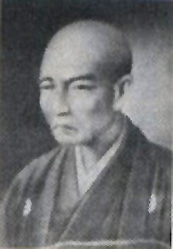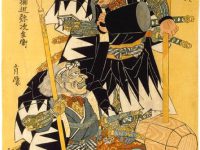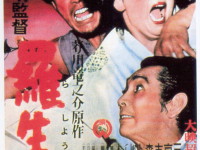
Yamamoto Tsunetomo (1659-1719)
On June 12, 1659 (other sources report June 11, 1659 – according to the Julian calendar July 13), Japanese Samurai Yamamoto Tsunetomo was born. He is best known for the publication of his compiled commentaries and aphorisms about the life of the Samurai under the title of Hagakure, a word that can be translated as either In the shadow the Leaves or The Hidden Leaves.
“Above all, the Way of the Samurai should be in being aware that you do not know what is going to happen next, and in querying every item day and night.” (Hagakure)
Bushido – the Way of the Warrior
Alright, another fellow of whom you might probably have never heard of. But, we think that we should also take care about famous people and events in history that might not be known to the mainstream. Yamamoto Tsunetomo for sure is one of these men and his story definitely is worth while telling. Although you don’t know Tsunetomo, you have probably heard about ‘Bushido‘, the way of the warrior. Bushido is a Japanese word for the way of the samurai life, loosely analogous to the concept of chivalry, and Hagakure is considered to be one of its most famous representatives. But let’s get back to Yamamoto Tsunetomo.
The Life of a Samurai
Yamamoto Tsunemoto was born on June 11 or 12, 1659, in Katatae, an area of the Nabeshima fief. Actually, the area was rather peaceful and although being a warrior, Tsunetomo never participated in a battle. However it was only twenty-one years before his birth that the last uprising had taken place which ended a one-hundred year period of war. Therefore the style of upbringing for Tsunetomo remained unchanged, teaching him the attitudes and role of his life as a Samurai.
Renouncing the World
Tsunetomo or Jocho , the name he took after retiring and becoming a monk, had entered into the service of Lord Mitsushige at the age of nine. For thirty years he devoted his life to the service of his lord and clan. When Nabeshima died in 1700, Yamamoto did not choose to follow his master in death in ‘junshi’ (=”suicide through fidelity”) because the master had expressed a dislike of the practice in his life. His loyalty to his Lord was unquestionable. Instead, Yamamoto followed his lord’s wishes and refrained from junshi. After some disagreements with Nabeshima’s successor, Yamamoto renounced the world and retired to a hermitage in the mountains, to live “in the shadow of the leaves.”
Bushido is a way of dying
At the age of forty-one he received Ketsu-myaku (blood relationship) from the priest Tannen. Later in life (between 1709 and 1716), he narrated many of his thoughts to a fellow samurai, Tsuramoto Tashiro. Many of these aphorisms concerned his lord’s father and grandfather Naoshige and the failing ways of the samurai caste. These commentaries were compiled and published in 1716 under the title of Hagakure. The work itself placed great importance on a samurai’s commitment to death. Tsunetomo believed that becoming one with death in one’s thoughts, even in life, was the highest attainment of purity and focus. The sentence, “Bushido is a way of dying,” is often said to summarize the work’s central theme. One of its most famous lines also expresses this sentiment quite clearly:
“In a fifty-fifty life-or-death crisis, simply settle it by choosing immediate death. There is nothing complicated about it. Just brace yourself and proceed.” (Hagakure)
Hagakure
But Tsunetomo also called for complete loyalty and service to one’s lord without any consideration for one’s self. Actually, Hagakure was not widely known in the time after Tsunetomo’s death. During the twentieth century it gained a great deal of popularity with the rise of militarism and nationalism in the 1930s. It was even said that kamikaze pilots wrote down verses from the Hagakure on a piece of cloth and tied it around their heads before their missions. Some viewed Yamamoto Tsunetomo as a man of immediate action due to some of his quotes, and in the Hagakure he criticized the carefully planned vendetta of the Forty-seven Ronin (a major event in his lifetime) for its delayed response, but this is already another story…[4]
SAMURAI LIT: Yamamoto Tsunetomo (Part 1), [7]
References and Further Reading:
- [1] Hagakure Kikigaki : Orated Aphorisms of Yamamoto Jocho
- [2] Quotations from Hagakure at Wikiquote
- [3] Tsunetomo, Yamamoto (2002). Hagakure: The Book of the Samurai. Wilson, William Scott (translator). Stackpole Books.
- [4] The Revenge of the 47 Ronin, SciHi Blog
- [5] Zen and the Art of Divebombing, or The Dark Side of the Tao by Kelley L. Ross
- [6] Yamamoto Tsunemoto in Wikidata
- [7] SAMURAI LIT: Yamamoto Tsunetomo (Part 1), 2020, Hop Light @ youtube
- [8] Varley, H. Paul (2000). Japanese Culture. Honolulu: University of Hawaii Press.
- [9] Timeline of Samurai, via DBpedia and Wikidata





